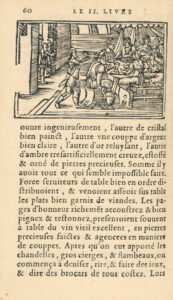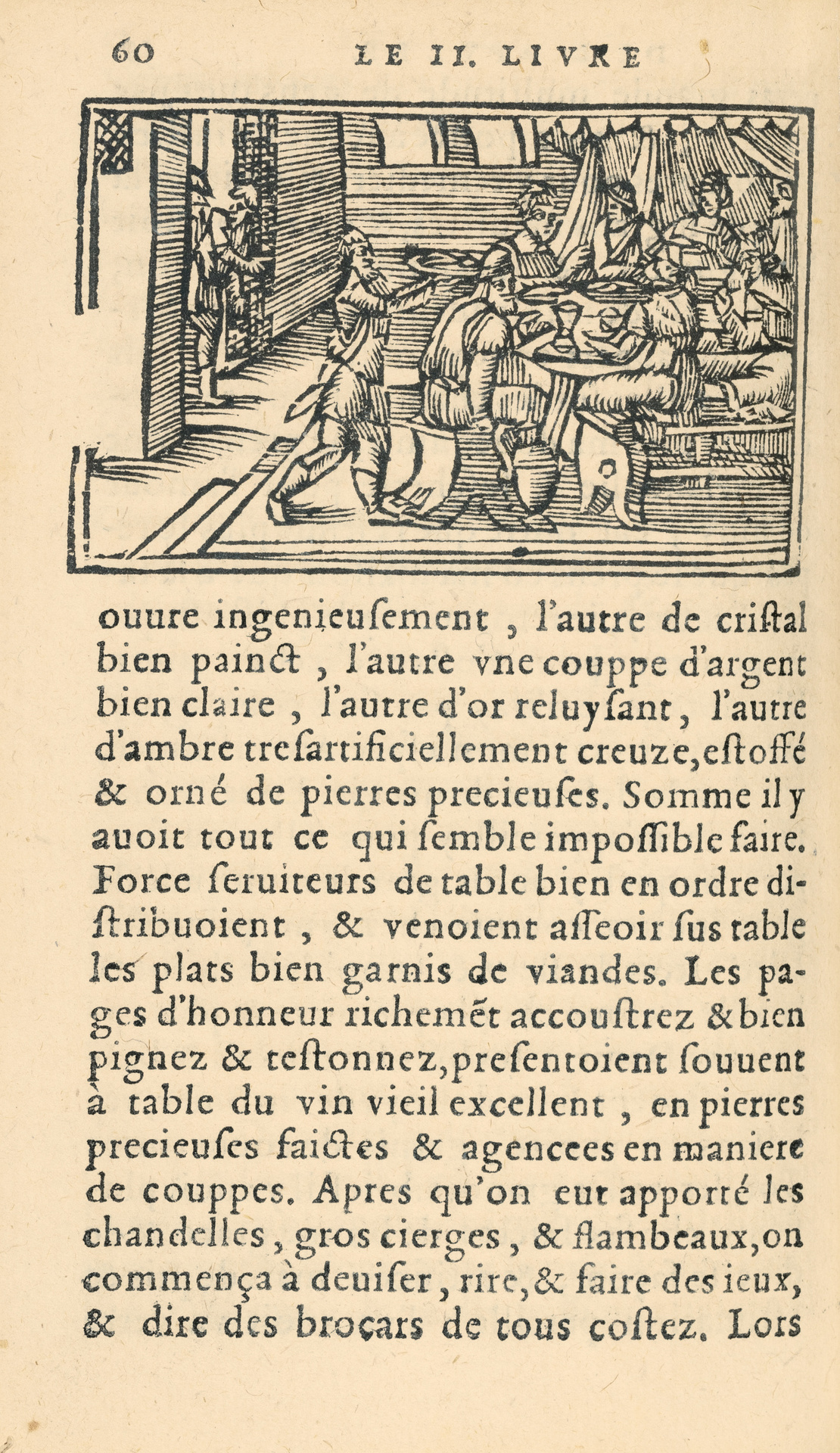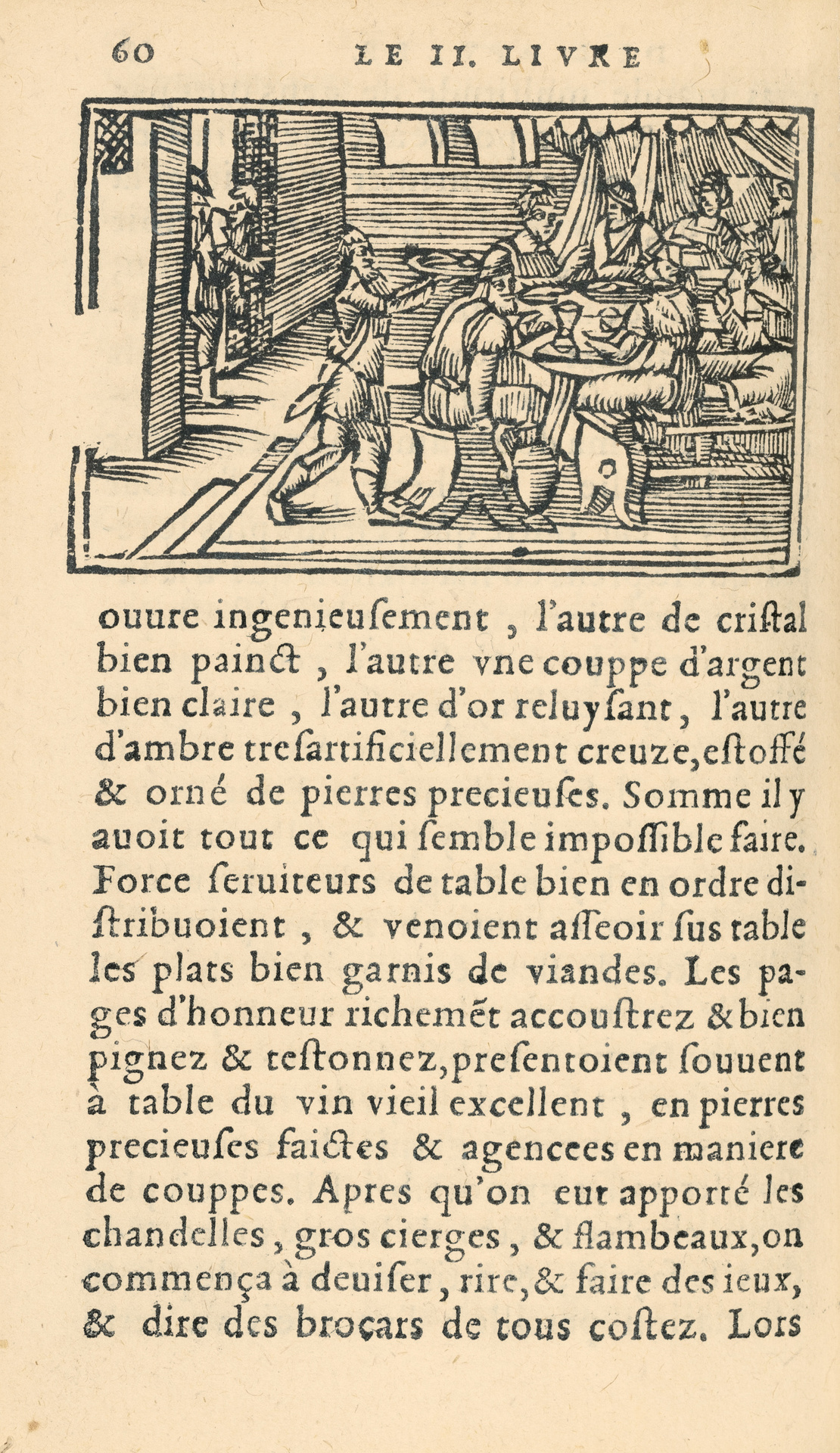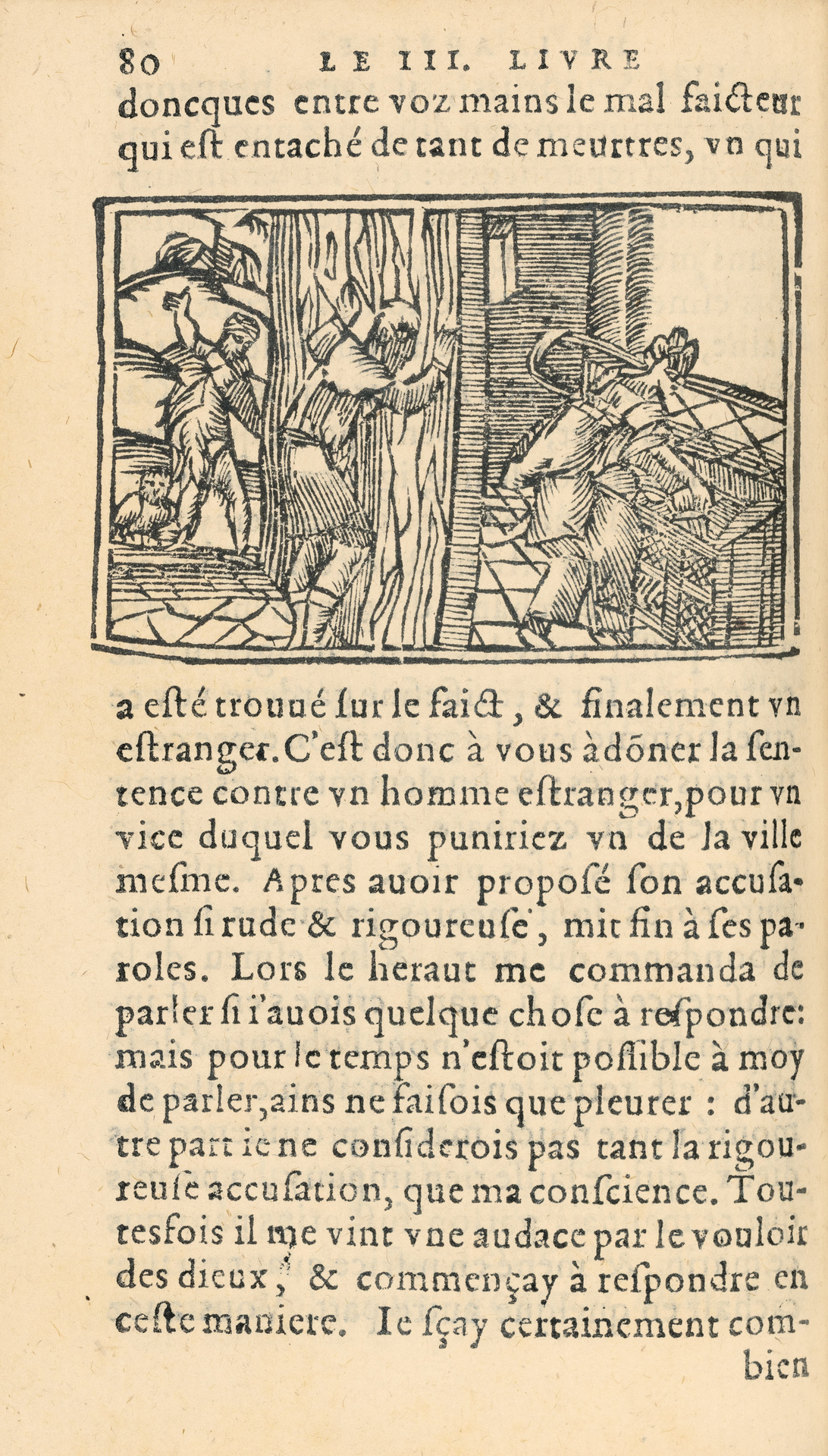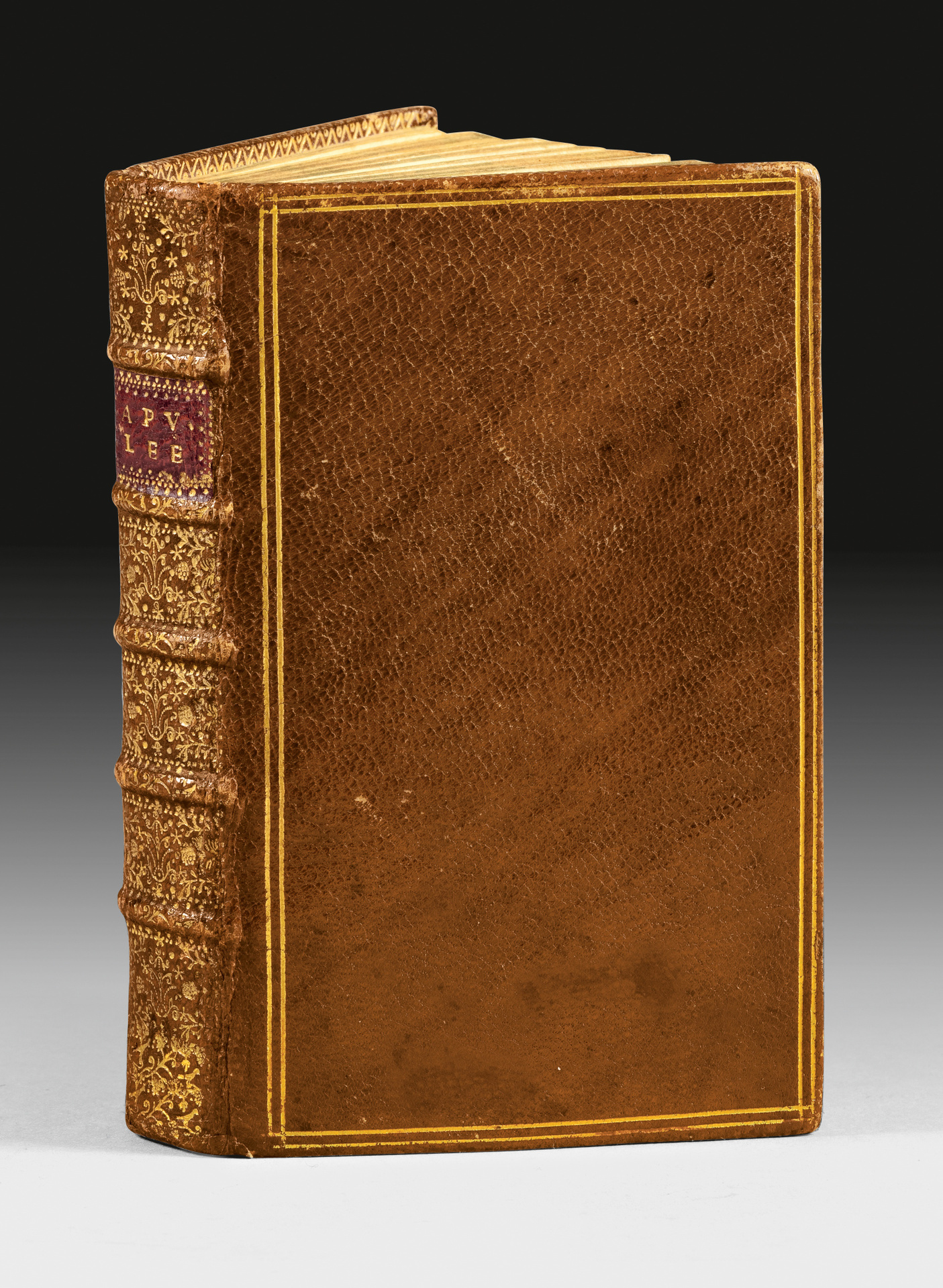16mo [114 x 69 mm]of (8) ll. 409 pp. and (10) ll. with a small loss in the margin of the 2nd l., without affecting the text. Full lemon morocco, gold fillets on the covers, spine ribbed finely decorated, decorated edges, gilt edges. Bound in 17th century morocco.
Precious and rare edition, in which Jean Louveau has inserted “l’Amour de Cupidon et de Psyché“, by J. Maugin, added with 30 pretty vignettes attributed to Bernard Salomon, known as le Petit Bernard, and which are a copy of 30 plates of which Marc Antoine is said to have engraved a part after the drawings attributed to Raphael.
The work also includes 30 eight-handed drawings by Mellin de Saint-Gelais, Claude Chapuys and Antoine Héroët.
This celebrated work considers the renowned Apulee, “who deploys all his genius and manifests himself as one of the most personal writers of Antiquity“.
This story in 11 books, considered by some to be a work of youth, and by others of maturity, composed after the trial he was brought to for using magic, describes the adventures of a young man “Lucius“, who is transformed into a donkey with the help of a magic ointment and who, after many adventures, returns to his human form. The exact title is Asinus aureus, « L’Âne d’or ».
“A manuscript belonging to Mgr. the duke of Aumale gives the names of the poets to whom are due the eightains which accompany the figures. the first ten are by Antoine Heroet, known as la Maison Neufve, the next ten are by Claude Chapuys, finally ten are by Mellin de Sainct-Gelays. There remain two eight of which the author is unknown. (Catalogue Lignerolles).
“The Metamorphoses” ends with the celebration of the sacred mysteries and the sacred initiations.
Underneath its appearance as a picaresque tale with a refined and colourful style, the Metamorphoses has a religious significance; the overall structure of the work is similar to that of the central episode of Love and Psyche – wanting to obtain by force, through magic, the vision of the divine, the character – the man Lucius or the soul Psyche – commits a fault of curiosity which is immediately punished: he falls back from the state of man to that of an animal, where the soul is driven out of bliss and falls into misfortune: In this state, trials assail him, the flesh (Venus) persecutes him; but at the end of these wanderings, having purified himself, the being obtains from the divinity (Isis is, by syncretism, the unique divinity that all the traditional pagan cults called by various names) by a spontaneous gift of the latter, the return to the initial state from which he had fallen.
With a malicious realism Apulee excels in painting in this lively and colourful novel a satire of the mores of the time.
“His prose continues a tradition that goes back to the “Fables of Milesia” to the novel of Petronius. Apuleius knows admirably how to comment on and colour the episodes he recounts; the comedy and irony come from the narrative and the variety of the language. The novelistic elements, which he introduces into the framework of his narrative, contribute to forming the atmosphere: that of magic, in the first part; of feminine excesses, in the last; at the centre ‘Love and Psyche’, a short story whose profound meaning has intrigued scholars and raised as many problems as those of the real or supposed purpose of the novel.”
Delicious volume from the Bibliothèque du Comte de Lignerolles preserved in its old baggage with remarkably decorated back.
It appeared in the catalogue of the sale of the Bibliothèque du Comte de Lignerolles of 5 March 1894 under n°1750 (“In-16, fig. on wood, lemon marble, thread, ornamented spine, gilt tr. Bound in the past. The eightains are those mentioned in the following article“).
